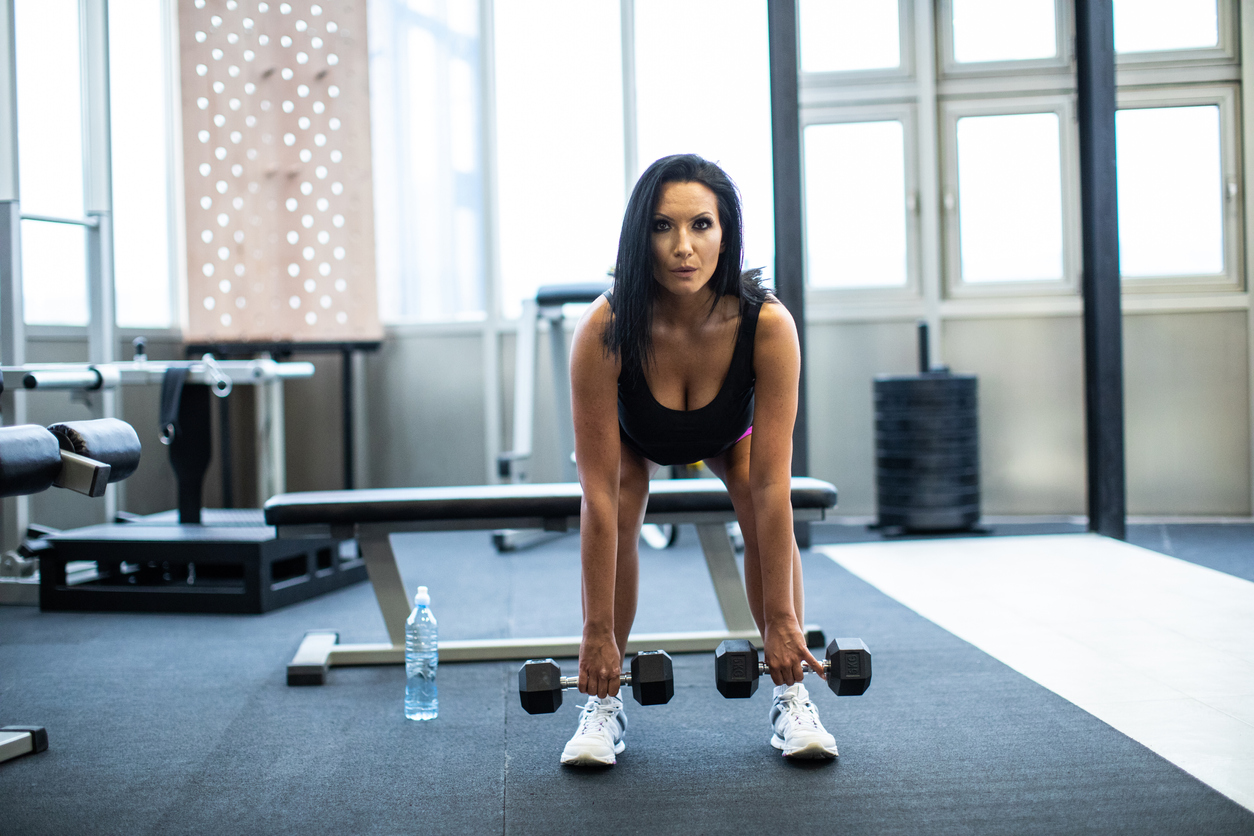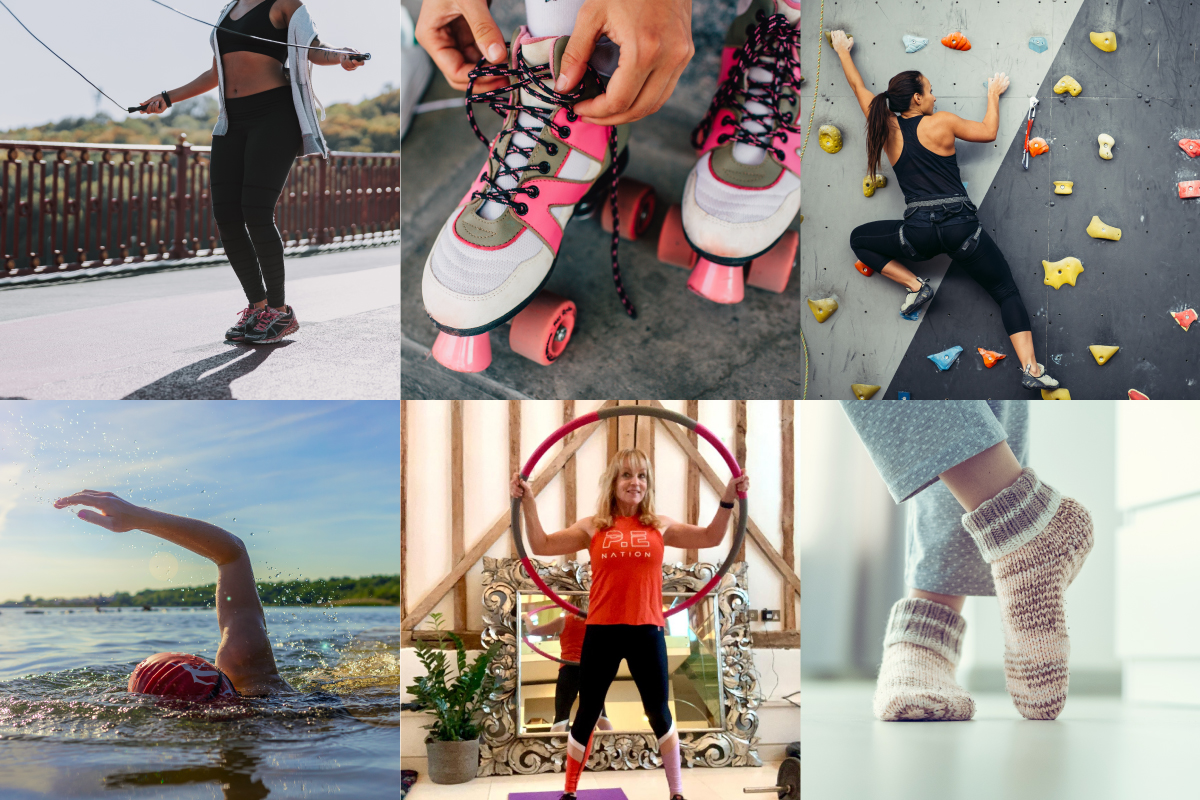Like everything in life, we tend to get in one daily routine on how we exercise. Going for a brisk walk, attending the same fitness classes, doing 10k steps – but just like the changes in our bodies our fitness regime needs to change as we age too.
As we get older our body changes. We start losing muscle mass, bones get weaker and our metabolism slows down. This is the time to add some strength training. It helps build muscle, burns more calories after the workout and helps you lose weight. It also helps strengthens joints and bones and improve your muscular endurance which can be more and more important as we age. Upon turning 50, women, in particular, have key health concerns due to hormonal changes that can rapidly cause deterioration of bone density (Osteoporosis), an increase in belly fat, and the loss of calorie-burning muscle tissue. Of course, men also benefit from weight training too. A Harvard health study showed that healthy men who worked out with weights for 20 minutes daily experienced less belly fat compared with men who spent the same amount of time doing aerobic activities.
Lots of our community have told me they find weights intimidating and don’t know where to start. So here are some easy to follow tips to help you get started on your weight/strength training, understand the basics and start to build confidence.
1. Warm up first
It’s important to warm up first as it helps loosen the muscle and prevent injury. Cardio is a great way to warm up. The key is to raise your heart rate and warm your muscles up. Go on the bike, treadmill, cross-trainer, rower or do exercises like knees up jogging on the spot, or star jumps for 5-10 minutes.
2. Use your body weight
You do not need to complicate weight training with machines to get started. You can use your own body weight or equipment like dumbbells and kettlebells. Weight training is anything that creates resistance to work your muscles. Challenge your body with full body press ups, keeping in a plank, squats or lungs. If you’re in the gym machines are good as they encourage your body to be in the correct position.
3. Start weight training two days a week
Beginners benefit from twice-a-week training, at least for the first month or two. Usually, it requires a day’s rest in between to allow you to recover. If you want to train daily, make sure you work on different body parts on different days, like a chest workout one day and legs or back another.
4. Use weights that challenge but don’t overexert
Different exercises will require different weights but go for a weight that feels heavy enough to challenge you, but not so heavy that you sacrifice your form. If you’re doing 15 reps, you should feel fatigued by rep 13. If you can breeze through, then they’re probably not heavy enough.
5. Increase weights gradually
One of the big challenges is knowing when to increase resistance. You need to increase it gradually and once you can lift it without pain 15 to 20 times its time to move it up. Be sensible about raising weights incrementally. You can increase weights more for larger muscle groups like legs but smaller muscles like arms and shoulders just try the next available weight up.
6. Count your sets and reps
Aim for 15 reps and three sets per exercise. When you’re just getting started to try to keep things simple. You can mix it up as you get more comfortable with the moves and need more of a challenge.
So, for example, do 15 squats followed by 15 push-ups. You can take a little breather then repeat that two more times. Then you move on to your walking lunges and lat pull-downs (and repeat those three times total, too). You can really do anywhere from eight reps to 15 (and even just two sets, if you don’t have time for three).
7. Get into a workout routine
Stick to the same moves two to three times a week to build basic fitness. Great results can be made by repeating the same workout and increasing the weights. To keep yourself motivated mix up your routine, this will avoid a training plateau, just increasing the weights can do this too.
8. Mix upper and lower body movements
When it comes to a beginner strength workout you can do a full-body workout is often the way to go rather than focusing on one body part on certain days. By using more muscles, you maximise the calories you burn. Try to pair one upper body exercise with one lower body. Aim for a balance between movements and include basic moves, pull, press, squat, lung, rotation.
9. Fit in a post-workout stretch if you can.
Stretching while your muscles are warm can help improve your flexibility and it feels great! A light cool-down is also great for cooling you down. Hold a stretch for 20 – 30 seconds to get the most out of the cool down.
10. Refuel and rest
After a tough sweat, it’s important to rehydrate. Drink lots of water and eat a balanced post-workout snack, ideally protein as this helps repair. If weight loss is important, keep the calories in mind at around 150-200 calories for a snack. You may feel sore and achy after the workout, so make sure you have rest days. If you don’t give your muscles a chance to repair, then you won’t give the muscle fibres time to build back stronger.
11. Find a weight training buddy
One of the best ways to motivate yourself is to find a weight training friend. Having someone to spot/support you while you lift weights makes it safer too and they can help you count reps, challenge you and support you!
And finally, one thing many women worry about getting big when you use weights, but if you follow these guidelines you will get as toned as you need to be. Do not be afraid to get help, ask the gym for an induction to weight training or book a PT for introduction to weights. There are also some useful articles and videos to help get you started.





